Ski touring pursuits in my early twenties brought me to the southern portion of the Gore Range on several occasions. A full-time geology job in Steamboat Springs, CO encouraged weekends in search of solitude and wilderness skiing, compensating for the restrictive lifestyle of a 9-5 occupation. Day tours included summits of Buffalo Mountain to ski the 50-classic Silver Couloir and Deming Peak to peer down the aptly named “Deming Drop”; terrain that lived on the fringe of “out there”.
I was perplexed by this mountain range due its proximity to the center of Colorado ski resort culture in Summit County. It was a genuinely untouched piece of wilderness that escaped being overtaken by ski resort development and large-scale mining. In 1968, it was saved from highway expansion with a decision by CO Secretary Freeman to reroute the proposed trajectory of I-80 over Red Buffalo Pass in order to preserve what was then referred to as the Gore Range – Eagles Nest Primitive Area. I found intrigue in its elusiveness. Many of the peaks still retain their generic alphabetical designation from early surveying and exploration. The terrain in the Gore Range appeared to be sculpted for skiing. From my vantage on those southern summits, I could see countless vertical scars filled with snow, always appearing snowier than the neighboring continental ranges of Colorado. I looked like paradise, and it was a really damn long walk to get in.
The idea of a full traverse of the range came up one night in Park City at the local bouldering gym. Two close friends, Steve, Sean, and myself had spent the previous couple years skiing low snowpacks in the crowded confines of the Wasatch and guiding climbers on the crowded trade routes of Rainier, Denali, and Aconcagua. Now, we craved our own adventure, our own space, and a sense of exploration.
While our home mountains in Utah were, again, plagued with a shallow snowpack and reliably under-performing storms, Colorado was in the midst of an “epic” snow season. Without the time or budget for last minute plane tickets for a more exotic expedition, we needed to find our adventure closer to home. Normally, with a dangerous continental snowpack, skiing in the Gore is usually confined to springtime. If there was a year to safely travel deep into the range, given the deep stable snowpack piling up in central Colorado, this season was it.
Besides a lone, vague reference to a Gore Range “ski crossing” by the late legendary climber, photographer, and ski traverse pioneer, Galen Rowell, we couldn´t find any first-hand information about traverses on skis through the heart of this range, despite many local skiers having surely had undocumented adventures here over the last several decades. All it took were a few photographs of the rugged lettered peaks of the Gore and Sean was in. Being primarily an alpine climber, long outings and suffering is Sean´s idea of fun. Even less convincing was needed for Steve. Steve, an ex-Bostonian metal-head turned mountain guide, is permanently stoked- a “yes man”. I´m not sure if Steve knew what State the Gore Range was in before he was committed.
April 23 – “You think we´re OK to park here?” Sean questioned, unknowingly serving up the ceremonial start to a typical early spring ski tour in Colorado; a state littered with unplowed and marginally maintained trailheads intended to serve the barrage of summer day hikers. A passenger’s typical optimistic response that crudely translates to “not my car, not my problem” did not seem to apply to Steve and myself, given our goal of a full Gore Range traverse from north to south.
The approach into the range from the north was put into perspective the evening before at a friend´s garage bouldering gym. “The approach is brutal, but you´ll have one hell of a ski off the south side of Eagle´s Nest,” coaxed Tim, local climber and the only Steamboat friend having experienced the north side of the Gore during the summer months.
Approaching the Cataract Lake Trailhead outside of the tiny village of Heeney, CO, our traverse began where dirt road met snow. Besides a local Heeney resident walking her dog, we were alone. “You should be fine. Nobody comes up here this time of year,” she said, offering consolation for our parking choice. Packs on, I checked my watch, 9:15am, immediately becoming aware of the futility of doing so on what was to be a five-day ski tour.
From the Cataract Lake Trailhead at 8600´, Eagle´s Nest (Peak A) rose gradually in the distance to the southwest, towering over 13,400´. The east facing ramps leading up towards Eagle´s Nest beckoned a casual entry into the range. After hours of following a compass bearing through thick Summit County forest, treeline arrived, and so did the weather. Our weather-window for the traverse began at 5 days, sandwiched between a cold and windy westerly flow at the start and a dropping upper-level low-pressure system at the end of the week. In gaining the east ridge of the Eagle´s Nest, the remnants of the departing system hit us square in the face. Blustery cold winter winds made traveling the narrowing ridge a chore, slowing our progress to a crawl.
From here, the view south into the heart of the range was humbling. Couloirs, sawtoothed ridgelines, and scoured unfriendly terrain spilled out in front of us as far as the eye could see, much bigger and badder than any of our topo maps could convey. All three of us gazed out with polarized emotions. Countless needle-width north facing couloirs looked like a lifetime of amazing skiing, but were surely not conducive to moving fast and covering ground. We had our work cut out for us.
With miserable weather and waning daylight, the search was on for a south facing couloir off of point 13,099´, a sub summit east of Eagle´s Nest. Every option was steep. Heavy packs, 40 degrees, and 1000´of rock solid frozen spring snow required every last ounce of physical and mental endurance, but we were finally doing what we came to do, ski.
Coasting into a rocky alcove below Cliff Lake, our focus turned to setting up camp to give us shelter from the wind and cold. Being astute to the wind direction, we got to work digging out a platform for our floorless MegaLite. Ironically, as soon as our platform was dug out, the wind flipped 180 degrees and began hammering our tent with vigor. I´ve tried to block out the following hour from my memory. Relocating our tent in a raging ground blizzard, a full-on bonk, friends helping friends blow up their sleeping pad, and falling asleep with a half-eaten dinner on my chest. Lucky for us, we woke to sunny skies; a welcomed sight given the 2″ of snow that blew through the weaknesses of our MegaLite overnight.
April 24 – Mount Powell (13,580’), the highest summit in the Gore Range, loomed overhead. The scenery around our camp was spectacular. The winds were still cranking and temps had tanked into the teens overnight. Leaving this camp at Cliff Lake meant that we were committed. If we were going to ski from Heeney all the way south to the town of Silverthorne at the southern terminus of the range, we needed to cover some ground.
As we moved south around the east arm of Mount Powell, laugh-out-loud reactions to our underestimation of the scale of these glacially carved basins and peaks dominated our conversation. “That Google Earth is full of shit,” we mocked. Past Mount Powell, traversing the broad alpine basins on the east side of the Gore Range crest, we moved underneath more behemoth summits including Peak C and C-prime, two of the lettered peaks that see a rare handful of ascents during the summer from the Vail side of the range. Skiing underneath the massive vertical north face of Peak C was truly when the beautiful reality of our adventure was realized. Skiing in an arena as grand as this is a fleeting, ephemeral experience, one that is impossible to absorb, no matter how focused on the moment you try to be.
A handful of climbs and transitions provided us beautiful south facing corn skiing after each of the small passes we crested. We were finally reaping some of the rewards for the suffering we had endured for the previous 36 hours. The skiing was perfect.
Originally intending to ski some of the couloirs we thought would be accessible on the east side of the Gore crest, we knew now that it was going to be one type of adventure or the other; a ski traverse, or a ski mountaineering trip, but not both. We were committed to the prior, conjuring up plans to come back and ski the lines we were painstakingly bypassing.
With perfect weather, we skinned past the snow-covered flats of Bubble Lake and up to Black Lake, perched in yet another beautiful bare glacial cirque below Peak D, Peak E, and Peak F. We admired a couple couloirs on Peak D that appeared to belong in Alaska.
Miles of skinning later, and another long creamy corn run down the SE Face of Peak G, we climbed to our 2nd camp at 12,100’ in the scoured cirque below Peaks J and K. Settling into the comforts of an Alaskan-quality walled camp after a long day of quick travel, we couldn’t help but be optimistic about the days ahead. Covering miles of alpine terrain in perfect weather was what we dreamed this traverse would entail.

“Won’t know until you go.” Steve dropping into the unknown from near Peak K into the Upper Piney Lake Drainage on Day 3
April 25 – Facets. The north-facing cirque above our camp was full of them. Easy skinning above camp turned into knee deep wallowing as the terrain steepened. Transitioning to boot packing, we made slow progress up towards the Col between Peaks I and J. Comically, punching through the faceted snow and blindly making easy 5th class rock moves where the buried cliff bands were nearest to the snow surface made the best progress.
After what felt like hours, and liters of sweat later, Sean and I gained the Col, giving us our first view of the drainages on the west side of the range, as well as the behemoth ski area that is Vail Mountain in the distance. Steve was still a short distance below the Col, wallowing deeper into a chest deep facet pit. Dropping him a rope, one that was brought with intentions of rappels and navigation of complex terrain, we pulled Steve out his sugary misery pit and onto the solid ground of the Gore Range crest.
A 1400´ west-facing couloir featuring aesthetic steep turns off the ridge, a down climbable rocky choke, and few puckery sections of icy sideslipping delivered us into the Upper Piney Lake drainage.
The decision to move over the to west side of the Gore Range crest was a hasty one, stemming from a weather forecast obtained the night before. Our weather window continued to narrow, now calling for heavier snow with the low pressure arriving 24 hours earlier, giving us 36 hours to complete over 1/2 of the remaining traverse.
With the impending end of good weather, the pressure was on to keep moving and our route selection became hasty. In search of mellower terrain and supportable snow, we skinned around the 12,692´spire, known as the Spider, to gain a mellow pass to its south. Gaining this pass, the error in our route diversion became evident. Unlike the high elevation, broad, alpine basins on the east side of the range, the western drainages cut deep into treeline, were littered with rotten cliff bands, and were caked in wet debris. Our optimism plummeted, but backtracking wasn´t an option.
Drainage hopping through both upper forks of the Booth Creek yielded mediocre corn skiing and inconvenient climbs. The joy we had experienced by moving fast and efficiently through the alpine over the previous 2.5 days was replaced with slow, conversation-free travel, interrupted only by the occasional outburst of frustration usually associated with skinning through wet debris and deep springtime mank.
Nearing the summit of Point 12,365’, we were greeted with a view of the 3000` southwest face of Mount Solitude as the sun began to set. Looking south, the remainder of the range appeared vast and intimidating. The ruggedness of this range was relentless. Red Mountain and Buffalo Mountain, the endpoint and southern terminus of the Gore, were mere blips on the horizon behind dozens of other summits and serrated ridges. There was too much terrain, and too little time.
To actually begin verbalizing our “failure” came as a huge relief. We laughed at how ambitious we had been, and how much bigger and more rugged the terrain was in person compared to topos and photos we had used in planning for the trip. Bailing a day earlier and coming up short of Silverthorne meant we´d have to get creative in finding a ride from Vail back to Heeney, a mere 54-mile drive. We called friends. We speculated about Eagle County’s public transit system. Sean made, what I thought was, a romantic proposal for a first date to a girl from Frisco he matched with on the dating app, Tinder. Trading a ride from Vail to Heeney for a romantic breakfast date with three rugged (smelly) skiers was a win-win in my book. Alas, no response.
April 26 – The next morning, after allowing the early sun to work its magic on the east facing slopes, we made one last beautiful corn run down a 2000´-slide path into the bottom of the Pitkin Creek drainage. Old ski tracks climbing up the drainage were the first signs of human life we´d seen in days. Soft spring snow eventually became patchwork, and finally, dirt, as we descended toward the town of East Vail.
A muddy trail led us to civilization. With free public transit, we holstered big packs and skis into a bus for the free ride into Vail Village. Cellphone service greeted us with a response from a friend from trailheads past. Seth, a Frisco local and backcountry skier I’d met at a trailhead during those first days of exploring the Gore Range in my early twenties, was more than happy to pick us up for universal currency of gas and beer.
Waiting for our ride in a deserted Vail village, we devoured real coffee and breakfast burritos, already talking about next year’s trip back to the Gore. “We’ll call it a crossing,” we joked, satisfied that even in coming up short of our goal, we found the solitude and the adventure that we had been searching for.
Robby is a 3rd generation ski patroller, mountain guide, and avalanche educator. When he’s not on a climbing expedition, he can be found at home in Park City, setting skin tracks with his friends, and schussing groomers with his girlfriend.

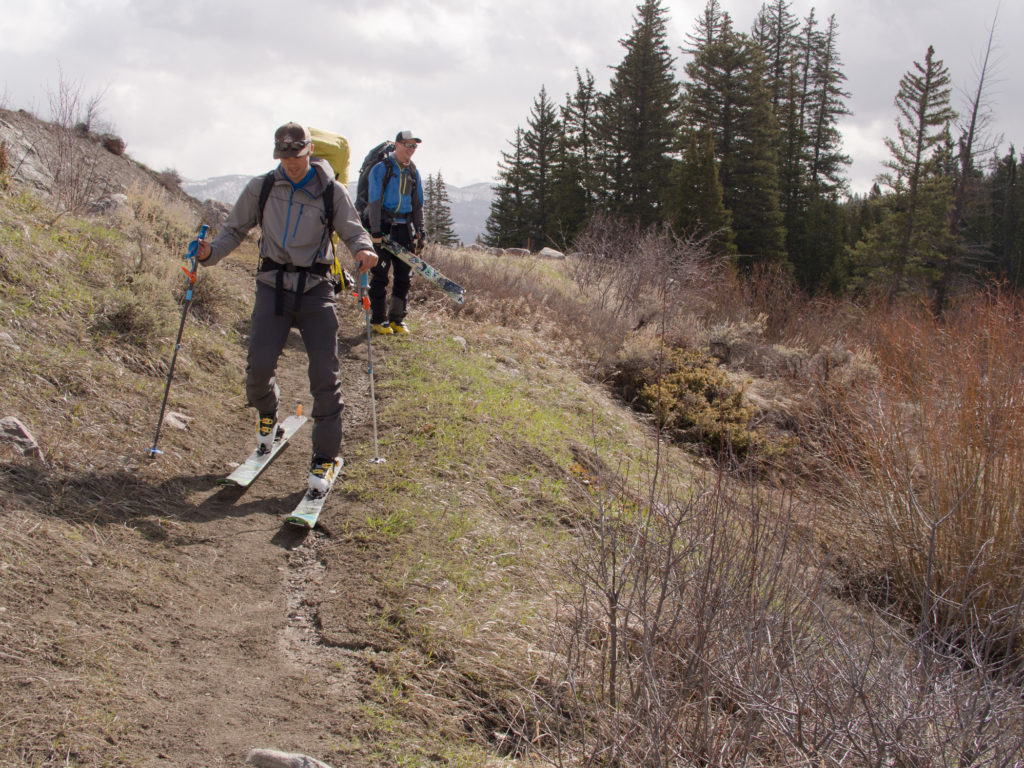
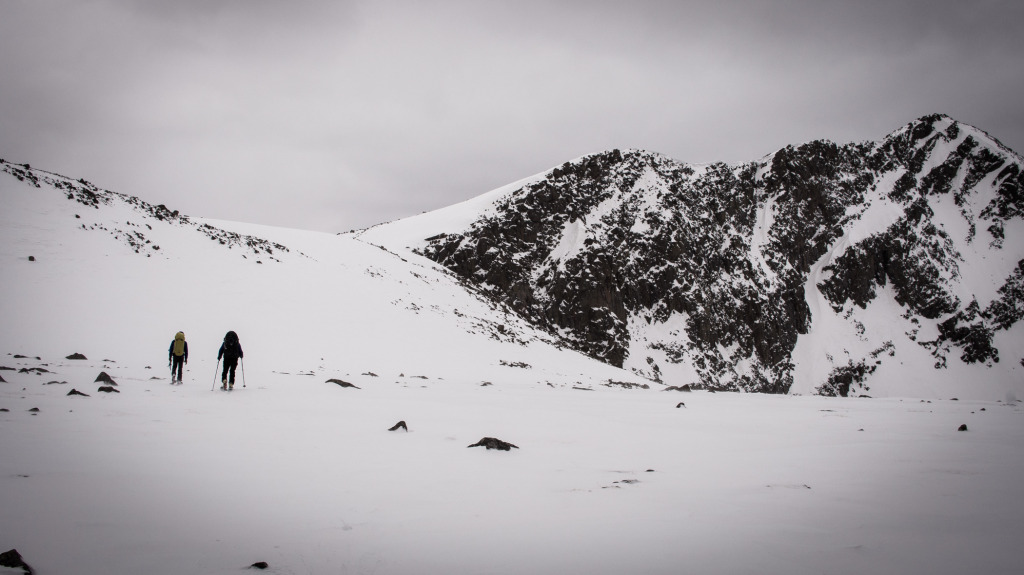
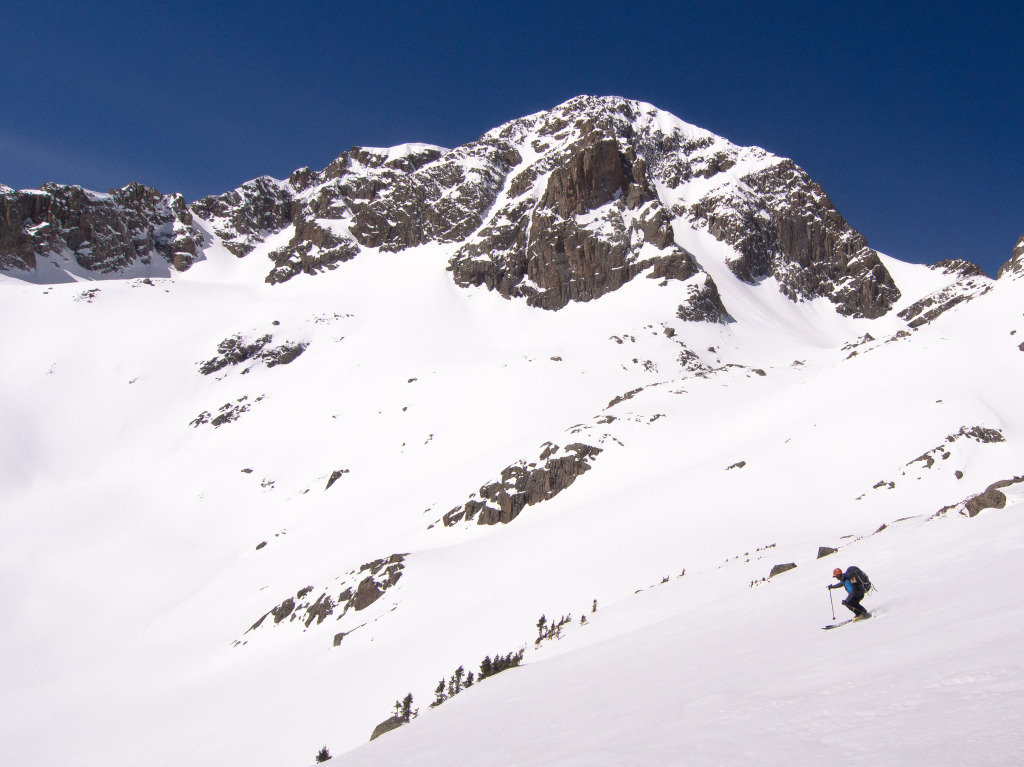


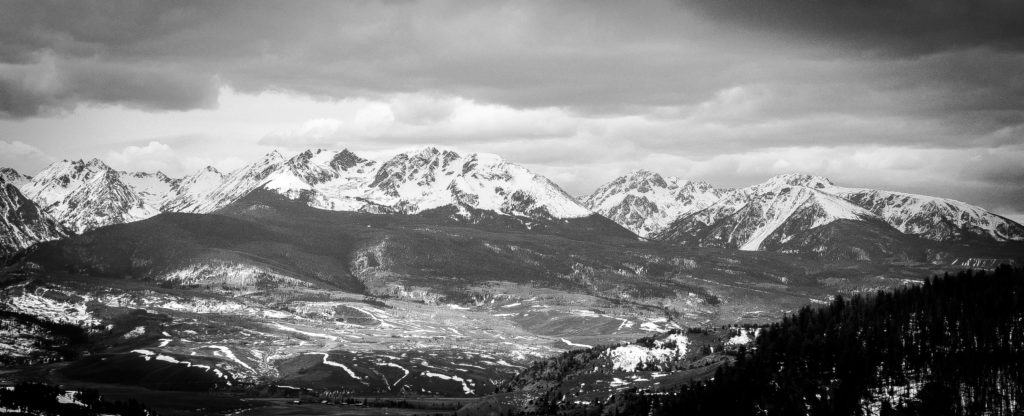

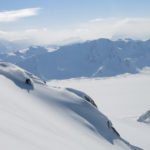
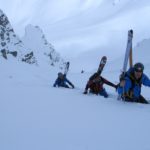
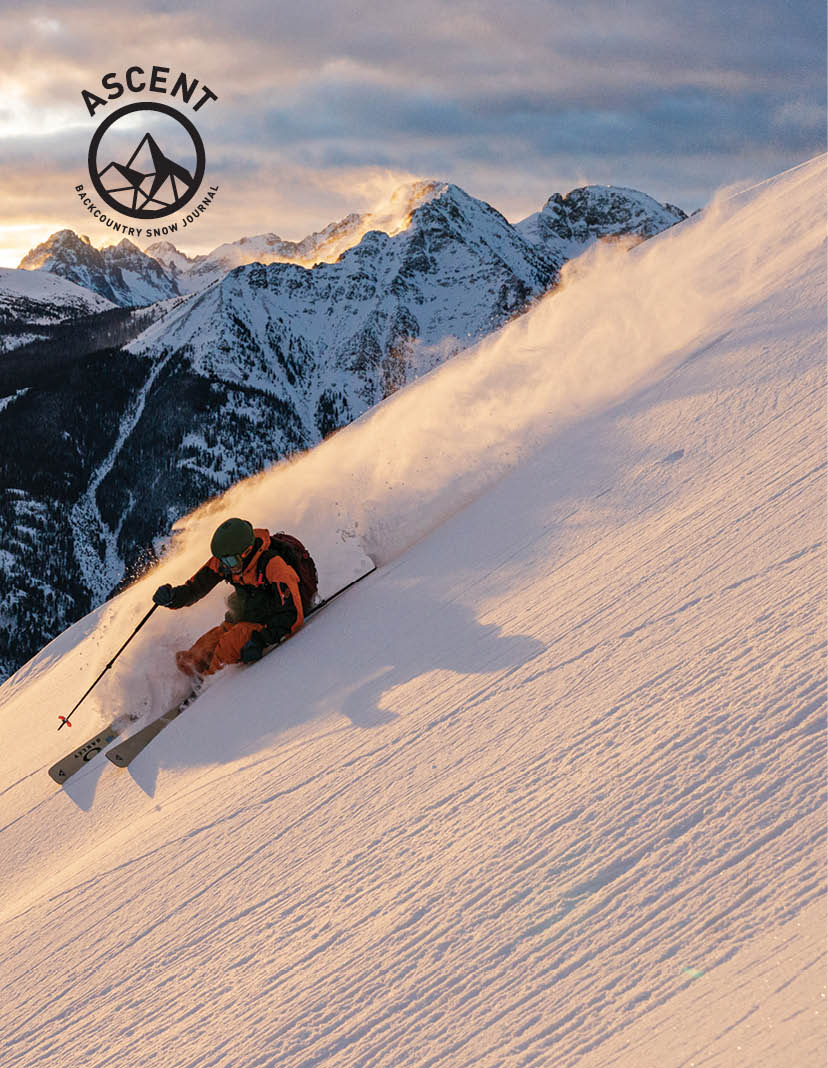





Nice effort. The Gore Range does not let passage that easy. It’s unique and challenging terrain that is like no other in colorado. Several have completed the traverse you were trying to complete. Old ski friend from Montezuma completed it in 3 days, with super light gear. I prefer to setup shop in one of the eastern basins and then tick off the fun lines. Traversing the range is not going to allow you to hit the good ski lines, unless you are planning on a 10-14 day trip. Nice job though. Fun read.
Interested in your comments oldvail. sounds like you know the area. i don’t know the area, but i do know solitude; born and raised at the north end of the cost range in bc. I want to head out for a solo week in the gore late june, early july this year and not see anyone while i’m back there. If you’d be so kind I’d love to pick your brain on the area. locals know best.
christopher.dvs@gmail.com
Chris,
Black Creek and Upper Slate is the place
Wow! who sent the whole range in 3 days thats rad! Kihm Beyer?
Also curious who sent it in three days? I know someone in Zuma but she doesn’t know who might have done this.